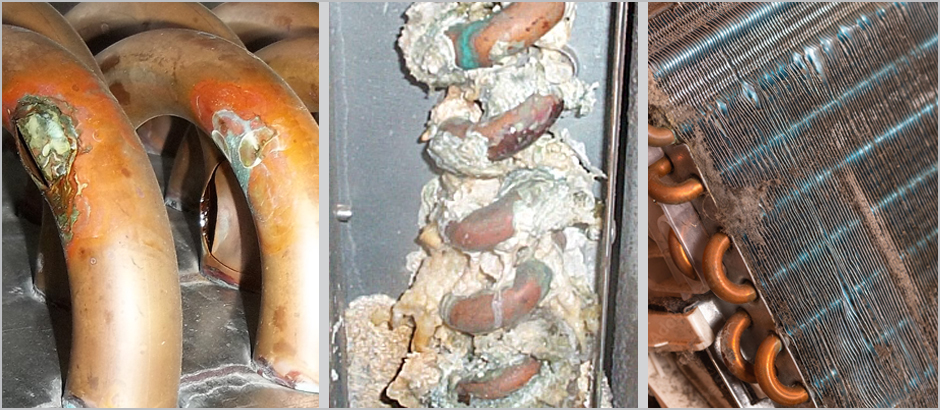
As the end of summer nears, and thoughts of cooler temperatures come to mind, don’t forget that continued proper maintenance of your commercial and industrial cooling coils will help you avoid bad surprises now, and when you really need those coils in the spring.
Maintaining your cooling coils during the summer and fall is crucial for ensuring HVAC system performance, minimizing energy usage, and prolonging the life of your equipment. As cooling demand peaks in the summer, and even early fall, coils come under significant stress, making regular maintenance essential. Here are a few maintenance tips to keep your cooling coils in optimal condition.
Regular cleaning
Dirty coils are one of the most common causes of reduced efficiency in HVAC systems. Dust, dirt and debris accumulate on the coils over time, creating an insulating layer that inhibits heat exchange and increases the air pressure drop through the coil. This causes the system to work harder, increasing energy consumption and wear on components.
Coil cleaning, however, is simple and inexpensive. Begin with a thorough inspection, and use a soft brush or compressed air to remove loose dirt and debris. For deeper cleaning, use a commercial coil cleaner that is specifically designed for HVAC systems. Apply the cleaner and wait the recommended amount of time before rinsing with water. Be careful to avoid high-pressure washing, which can damage the fins.
Check for corrosion
Cooling coils, particularly those in harsh or humid environments, can be prone to corrosion over time, which not only reduces efficiency but can also lead to leaks and system failures. Refrigerant leaks can be expensive and water/fluid leads can cause severe damage and lead to mold formation. So, it’s a good idea to regularly inspect coils for signs of corrosion and leaks.
If your coils are in a particularly harsh or corrosive environment, hopefully they are constructed of corrosion-resistant metals, and/or were treated with a protective coating. If not, Marlo can replace those coils when needed. We regularly produce cooling coils with special materials such as stainless steel and copper nickel – and also over a variety of protective coatings – to help assure long coil life even in challenging applications.
Ensure proper airflow
Airflow is critical to the efficient operation of cooling coils. Blocked or restricted airflow can cause the coils to freeze or overheat, leading to system inefficiency or failure. Like most other potential coil problems, this issue is easily resolved with regular visual inspections.
Simply keep the area free from debris and ensure that there is no blockage around the coils. This includes ensuring that louvers or grilles are unobstructed and operating properly, and that air filters are checked regularly and replaced when needed. Also, check the fans that blow air over the coils to make sure the fan blades are clean and that the fan motor is operating at the correct speed. Bearings should also be checked regularly for noise or binding, which are clear signs that a failure is imminent.
Monitor and maintain condensate drains
Cooling coils produce condensate, which must be properly drained to prevent water damage and mold growth. Blocked or poorly maintained condensate drains can lead to water overflow and damage to the surrounding areas.
Be sure to regularly inspect condensate drains for blockages or leaks, and check drain pans for cracks or corrosion. Also, ensure the condensate drain pan is properly positioned to collect all water from the coils. Drains can also be flushed with water or a mild cleaning solution to ensure they are clear.
By following the simple maintenance steps discussed above, you can ensure that your commercial or industrial cooling coils operate efficiently throughout the summer and fall, reducing energy costs and preventing unexpected breakdowns. Proper maintenance not only enhances performance, but also extends the lifespan of your HVAC system, providing long-term savings and reliability.
If you do find that your coils are leaking or otherwise damaged, you can obviously choose to hope they get through the rest of the cooling season, and put off dealing with the problem until the spring. However, you are only delaying the inevitable.
So why not replace failing cooling coils when temperatures drop in the fall, when they are no longer needed to keep your building cool. Addressing the issue now will avoid more serious problems in the spring when you get that first blast of heat – and will also eliminate the need and expense of expedited replacement.
Email Registration
Please complete the form below to sign up for our news alerts and other email communications.
"*" indicates required fields